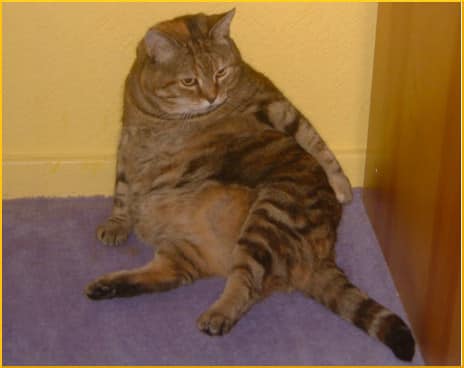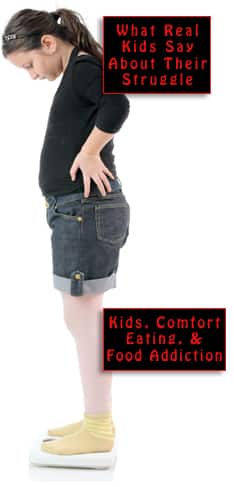
It is still National Pet Obesity Awareness Month, and we have been talking about what happens when a pet-parent institutes a program designed to halt the companion animal’s addiction to overeating. All the details are present in “Similarities between obesity in pets and children: the addiction model,” co-authored by Dr. Robert A. Pretlow and Dr. Ronald J. Corbee, and published in the British Journal of Nutrition. We will mention a few more highlights here.
First, the pet-parent (or child-parent) helps pet or child at risk for obesity to identify and eliminate any foods that particularly act as addictors for them. Then, between-meal snacks are removed from the repertoire. Although resistance may pop up at any time, it is most likely to become serious at the next stage, the gradual reduction of mealtime portions. We mentioned that both children and pets may protest by withholding affection or chewing up unauthorized objects (dog), leaving an unpleasant souvenir in an unexpected place (cat) or throwing tantrums (small child.)
Anyone who has seen a documentary about an extremely obese person who can no longer walk, must have wondered, “Why doesn’t the caregiver simply stop bringing in huge amounts of the wrong kinds of food?” The reason is emotional blackmail. A caregiver who has few other human connections and very little outside life can’t afford the emotional distress of incurring the anger or emotional coldness of the obese person. This is an extreme version of the minor-league aggravation caused by a pet or small child that doesn’t get its way.
What else do they do?
Of course, to a parent in the midst of that kind of chaos it doesn’t seem so minor. An already-harried parent whose child knows for a certainty that there are treats in the kitchen is likely to give in, because to pack the child in a crate and mail it to another state would be illegal. This is why parental education is so essential, and why programs meant to curb child obesity depend on the entire family’s participation.
Pestering, of course, is an art form also practiced by pets. The ideal for a cat is to get it down to three distinct meals per day, with no extra treats, and no food left in the bowl for casual grazing. The felines are not known for their compliant ways, and a cat who objects to a new regime is likely to wake its pet-parent in the middle of the night. A more well-adjusted cat might chill out most of the time, but get all hyper and demanding the moment the human steps into the kitchen.
Entering the kitchen is known as a trigger, and vigilant trigger avoidance might be necessary. It might help to keep pet food sealed up tightly, so the animal is not tormented by the constant scent of food.
A dog or a small child can be distracted by play, or going for a walk, but the circumstances aren’t always right for those solutions. One way or another, everybody would be well-advised to learn some new coping skills. Dr. Pretlow and Corbee mention another potential roadblock:
An additional problem in pet obesity lies in multiperson households. As pets cannot speak, they will constantly take treats from every person in the household. As all caregivers like to give food and treats to their pets, the behavioral addiction methods should be used by all caregivers.
With kids or pets, if more than one grownup is involved in the de-addiction effort, they need to be “on the same page” and present a united front. If the parents disagree, and compete against each other for favor, it’s a recipe for disaster. And then grandparents weigh in, with absolutely no intention of being told what they can feed their grandkids, and issues of cultural preservation might even be raised. The message to pet-parents is, you probably have it easier in many ways — so appreciate that advantage, and help your pet get down to a healthy weight.
Your responses and feedback are welcome!
Source: “Similarities between obesity in pets and children: the addiction model,” Cambridge.org, 06/17/16
Photo credit: Les Chatfield via Visualhunt/CC BY

 FAQs and Media Requests:
FAQs and Media Requests: 











